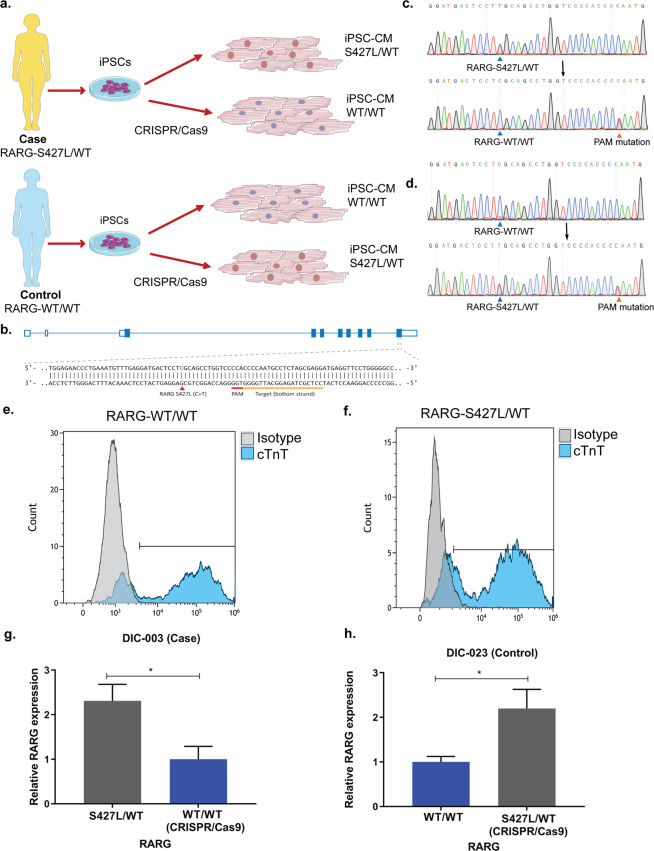Figure 3.
Genome editing experimental approach and comparison of edited and unedited isogenic cell lines. (a) Experimental approach of CRISPR/Cas9 experiments, correction of RARG-S427L/WT in a case (DIC-003) patient cell line and insertion of RARG-S427L in a control (DIC-023) patient cell line. Images have been acquired from Servier Medical Art by Servier licensed under a Creative Commons Attribution 3.0 Unported License. (b) Schematic overview of RARG locus and CRISPR/Cas9 genome editing approach. (c) Sanger sequencing results showing correction of RARG-S427L/WT to WT/WT (DIC-003). (d) Sanger sequencing results showing introduction of RARG-S427L/WT to a control WT/WT patient cell line (DIC-023). Flow cytometry results of cTnT expression in (e) RARG-WT/WT and in (f) its isogenic genome edited S427L/WT cell line. (g) RT-qPCR results of RARG expression, in the heterozygous case (DIC-003) and the isogenic corrected WT/WT cell line (h) RT-qPCR results of RARG expression in the homozygous control (DIC-023) cell line (WT/WT) and the isogenic edited S427L/WT cell line. Data are shown as mean ± s.e.m., n = 3, representing biological, independent replicates *p < 0.05, t-test.

